PACKLIST FOR UW PHOTOGRAPHERS - WARM WATER
by underwater photographer Magnus LundgreN
So why a page like this?
Many travellers feel uneasy when packing for their UW photography trip. You do not want to forget any vital gear and at the same time minimize the luggage. It is sometimes ridiculous when we travel to the other side of the world with so much equipment and we can still only fit in five pairs of underwear. So the packing for a trip is all about bringing everything you need and nothing else.
The time we spend on dive trips are unfortunately limited so when we are out there we can't accept a stand still photography wise. So to make sure you bring all items and have a reasonable redundancy on location use this list a reference. The packlist below is a general recommendation and bare in mind that you might need addtional items on your trip and at the same time you do not need to follow all recommendatins below.
 PACKLIST FOR WARM WATER PHOTOGRAPHY TRIP
PACKLIST FOR WARM WATER PHOTOGRAPHY TRIP
Divided into three sections - photography - diving - clothes
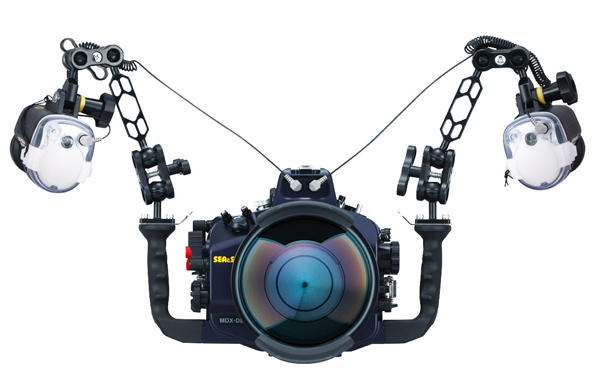 Photography equipment packlist
Photography equipment packlist

When it comes to photography this equipment is on the top of the priority list when packing. What you bring is what you have when you get there so please bare this in mind. I have divided the photography equipment list into traditional camera stuff called Regular photography equipment and one section for UW photography equipment to make it clear and easier to pack.
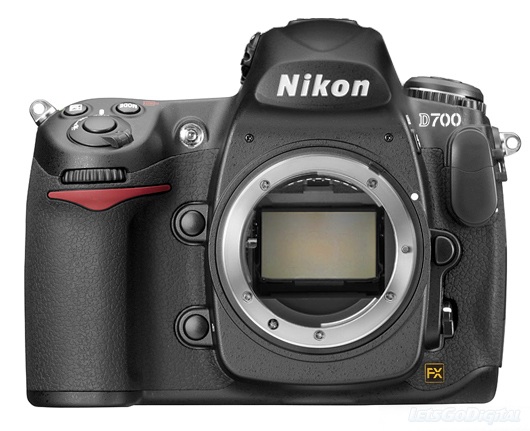 Regular photography equipment → Camera/sRemember to bring the charger and manual for your camera and consider to buy an extra battery. For professionals it is good idea to bring two cameras of the same brand and model. This allows you to have a topside ready-to-be-used camera as well as a back-up camera for UW housing. → Lenses - wide, macro & topside.Adapt the selection of lenses you bring to the photography ahead and remember to have a least one wide and one macro lens along. Topside a 24-70 mm and/or a 70-200 mm lens, or the equivalent for your camera system, is very versatile in combination with the underwater lenses you bring. → Filters
Regular photography equipment → Camera/sRemember to bring the charger and manual for your camera and consider to buy an extra battery. For professionals it is good idea to bring two cameras of the same brand and model. This allows you to have a topside ready-to-be-used camera as well as a back-up camera for UW housing. → Lenses - wide, macro & topside.Adapt the selection of lenses you bring to the photography ahead and remember to have a least one wide and one macro lens along. Topside a 24-70 mm and/or a 70-200 mm lens, or the equivalent for your camera system, is very versatile in combination with the underwater lenses you bring. → Filters
A general rule is to avoid filters on good lenses. It can wise to bring a polarizing filter for topside harsh daytime light and when photographing sea water and a couple of diopters (+2, +3 or +4) can be useful underwater to bring in the closest focus point closer to the camera on some rectilinear wide angle lenses and the diopter may also help corner sharpness.
→ Memory cardsAlways bring several cards as a card can malfunction or get lost. Memory cards decrease rapidly in price so to buy a new one before every major trip will keep your card park well updated. → Laptop & external hard driveIt is a great advantage to check images on your laptop while on location so a laptop is a highly recommended item to bring. Another mandatory point is to have enough storage on external hard drives and you need a computer to use those hard drives. Remember you should always store your images in two separate places for safety. → Transfer imagesA good card reader with a modern USB connection is advicable and not expensive. Always bring the USB cable to connect your camera directly to the laptop as a back up. You should always have two ways to load your photos onto your computer. → Adapters, plugs & plug board Wherever you go you have to check what foreign plug types and power networks are to be used. Check on the net before you go and get the adapters and plugs you need. A plug board going from one plug to three or four is handy when charging a lot of batteries with many separate chargers. 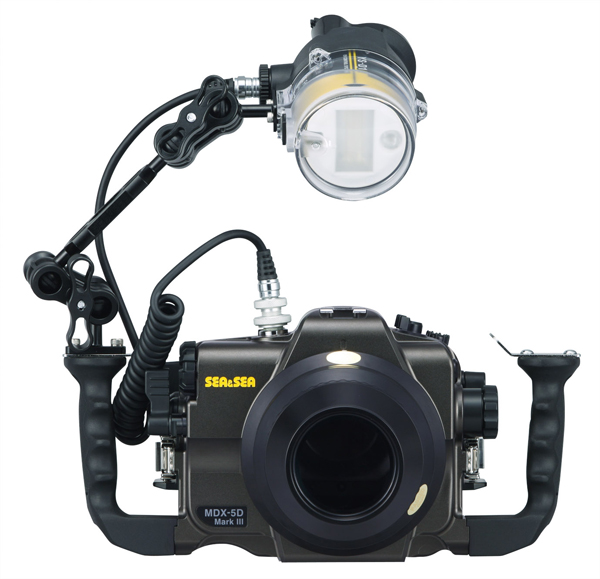 UW photography equipment → UW housingCheck that your housing is in good working order before the trip. By doing a test dive you check water tight integrirty and functions at them same time. → Dome ports, flat ports & extention ringsKit up your ports with back and frontal protection to avoid transport damage on your ports. Important! Always bring a polish kit if you have an acrylic dome port so you are able to recondition if needed on location. The domes are often easy to scratch accidentaly. → Strobe/s & diffusersA spare strobe can be a real trip saver. Best is to have a spare which is the same as your regular strobe/s but there is also low cost strobes like SEA&SEA YS-02 as a cost efficient back-up alternative. Pack down batteries, extra batteries and charger for the strobes. Diffusers are useful for soft lighting and you can change your strobes colour temperature to suit the water you are visiting better. Contact us if you want to get a variety of diffusers. → Cables & TTL converterToday cables are very durable but there is a small chance for trouble and back-ups are mandatory. If you use traditional cables a set of optical cables is a low cost and safe back up system. TTL converters sometimes use batteries so please bring a spare battery if your converter use battery. → Arms & traysIt is easy to forget one arm, a single clamp or an adapter so it is a goo practise to set up the system before you pack and test shoot. This will make sure you have everything in place. Many photograpers have a whole set of arms they bring and through different combination they can achieve different lengths but also different bouyancy lift from the arms to enable them to dive with a balanced camera system. Contact us and we will help to find the best solution for you. → Focus lightBring batteries and charger and remember that light and battery must be separated during flights for safety reasons. You also need to bring a clamp, hot shoe or arm system to hook up the light on your camera rig. → Spare equipmentAlways keep a stash of spare o-rings for all the user changeble o-rings on your system. If you have a cut in one o-ring you can quickly replace it. Extra silicon grease, lens paper, blower, lint-free cloth are other handy things to bring. → UW colour enhancing filtersIf you plan to use underwater filters make sure you bring a filter suiting the water colour you plan to visit. Filter colours vary and often come in red,violet or orange. For video use a red or orange filter is highly recommended in the blue tropical waters. → Small toolkitSuch as a small screw driver, small size allen keys, o-ring remover and other minor spare parts for your equipment.
UW photography equipment → UW housingCheck that your housing is in good working order before the trip. By doing a test dive you check water tight integrirty and functions at them same time. → Dome ports, flat ports & extention ringsKit up your ports with back and frontal protection to avoid transport damage on your ports. Important! Always bring a polish kit if you have an acrylic dome port so you are able to recondition if needed on location. The domes are often easy to scratch accidentaly. → Strobe/s & diffusersA spare strobe can be a real trip saver. Best is to have a spare which is the same as your regular strobe/s but there is also low cost strobes like SEA&SEA YS-02 as a cost efficient back-up alternative. Pack down batteries, extra batteries and charger for the strobes. Diffusers are useful for soft lighting and you can change your strobes colour temperature to suit the water you are visiting better. Contact us if you want to get a variety of diffusers. → Cables & TTL converterToday cables are very durable but there is a small chance for trouble and back-ups are mandatory. If you use traditional cables a set of optical cables is a low cost and safe back up system. TTL converters sometimes use batteries so please bring a spare battery if your converter use battery. → Arms & traysIt is easy to forget one arm, a single clamp or an adapter so it is a goo practise to set up the system before you pack and test shoot. This will make sure you have everything in place. Many photograpers have a whole set of arms they bring and through different combination they can achieve different lengths but also different bouyancy lift from the arms to enable them to dive with a balanced camera system. Contact us and we will help to find the best solution for you. → Focus lightBring batteries and charger and remember that light and battery must be separated during flights for safety reasons. You also need to bring a clamp, hot shoe or arm system to hook up the light on your camera rig. → Spare equipmentAlways keep a stash of spare o-rings for all the user changeble o-rings on your system. If you have a cut in one o-ring you can quickly replace it. Extra silicon grease, lens paper, blower, lint-free cloth are other handy things to bring. → UW colour enhancing filtersIf you plan to use underwater filters make sure you bring a filter suiting the water colour you plan to visit. Filter colours vary and often come in red,violet or orange. For video use a red or orange filter is highly recommended in the blue tropical waters. → Small toolkitSuch as a small screw driver, small size allen keys, o-ring remover and other minor spare parts for your equipment.
→ A good case
A box, or case, will protect your camera system and is adding important safety to your gear. Many cases can handle great impact even if it is accidentaly dropped.
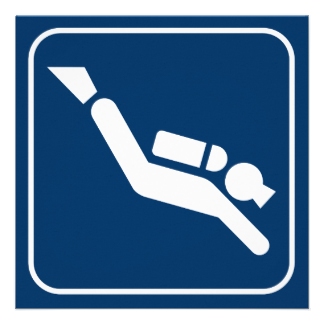 Dive equipment packlist
Dive equipment packlist
When it comes to the diving it is always good to think in terms of on location safety, water temperature, type of diving and health. Below you can find our general suggestions.
→ Logbook & divers certificate
Also bring your nitrox licence along because you do not always know in advance if you need it. Loogbook is asked for used to verify a divers experience level apart from your diving license that is a proof on your education level.
→ Current travel and/or dive insurance
Mandatory by some dive operators.
→ Suit
It is more common that people bring way to thin suits than anything else in terms of suits. Five to seven mm full body suit is the way to go for photographers and nothing else.
→ Hood & glovesThe hood keeps you warm and is often nice to have on night dives. A hood is also good for ear protection when travelling on windy zodiacs. Gloves can be useful but are prohibited for the right reasons on many delicate coral reefs. → RegulatorThis is a life support system so we recommend you to always bring your own. If you have a DIN connector it is a good habit to always have a yoke adapter in the packing. → BCDHere you can save some kgs by using a modern and light weight vests with quality and durability. → Fins & bootsOften not a thought threw item. We think some locations need powerful fulfoot fins while others need heel strap fins and good boots to walk in the water. We also recommend you to bring a pair of extra small macro fins to move around in delicate environments where swimming power is not a consideration. → Mask & snorkelMost divers today bring a spare mask on their trip and a good quality snorkel is useful when encountering dolphins or taking images while snorkeling. → Weight beltThe weight belt is an often overlooked safety concern and to often the weight belts are not up to standards arriving to your dive location. We recommend you to bring a good belt in your packing for secure handeling and no dropping while diving. → Safety equipmentMandatory: SMB (submersible marker bouy) with line or a reel, whistle or a horn attached to BCD. → Dive computer/sIt is good idea to bring two computers on am intense dive trip. You can keep one on the dive equipment or on yourself and one on the camera and if one of them fails you can continue diving on your liveaboard trip without any delays. → Health/medicin dive relatedGood items to bring is nasal spray and decongestant pills (Rinexin, Sudafed, Actifed) to help blocked ears and sinuses to open up. To avoid swimmers ear (higher risk when diving for one or two whole weeks in a row) you can clean the your ear with alsol after every dive. → Fixing minor problemsWe found that tie-wraps, electrical tape and duct tape can fix many minor problems in the field. When suitable these items is well worth bringing.
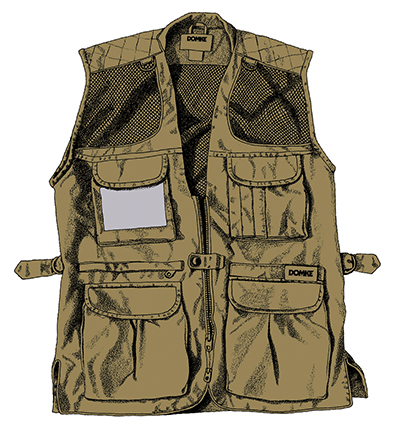 Suggestions: clothes & other accessories
Suggestions: clothes & other accessories
We will not make a long list here as this is a very indvidual part of the packing but remember that the priority ladder for an underwater photographer is 1) photography equipment 2) dive equipment and 3) clothes. Here comes a few reminders on items that we found very useful on the clothes list:
→ Warm capFleece or similar to save your ears on windy boat rides and it is a blessing after night dives even in a tropical location. → Stay warm in the tropicsA thin fleece jacket and/or a wind or waterproof jacket are often good items to bring. → Crocs clogs (or similar)A lightweight footwear do a great job on boats, walking onto a beach or in other wet envrionments. → Sun protection A pair of good quality sunglasses, peaked cap and maybe a lycra sweater for easy snorkeling. Sun screen protection can often be bought on location.
 Your valued feedback
Your valued feedback
We are here to help you get the right stuff along with you on your trips and we hope you find our guide above useful. If you have suggestions on missing information please do not hesitate to mail us info@exposureunderwater.com.
 PACKLIST FOR WARM WATER PHOTOGRAPHY TRIP
PACKLIST FOR WARM WATER PHOTOGRAPHY TRIP![]() Photography equipment packlist
Photography equipment packlist
![]() Dive equipment packlist
Dive equipment packlist![]() Suggestions: clothes & other accessories
Suggestions: clothes & other accessories![]() Your valued feedback
Your valued feedback Large stock
Large stock
 Fast shipping
Fast shipping
 Market-leading support
Market-leading support
 +46 (0)40186262
+46 (0)40186262
